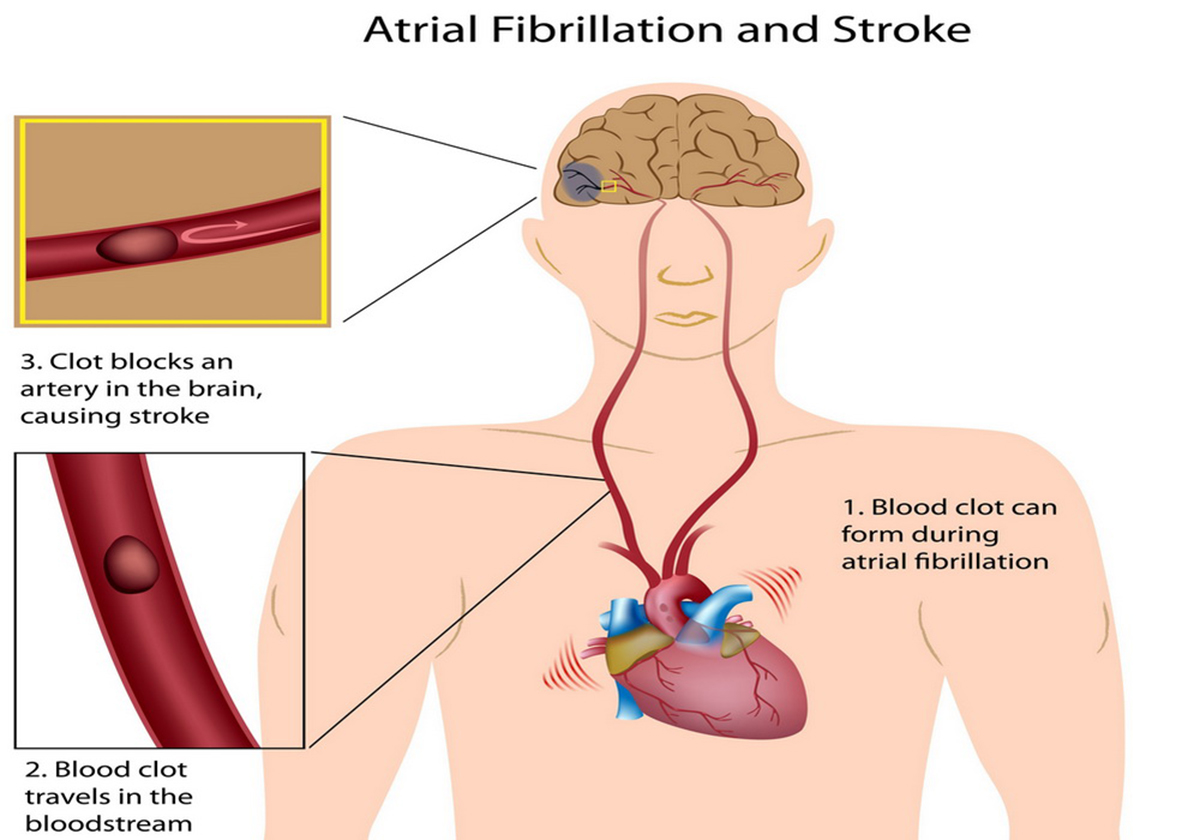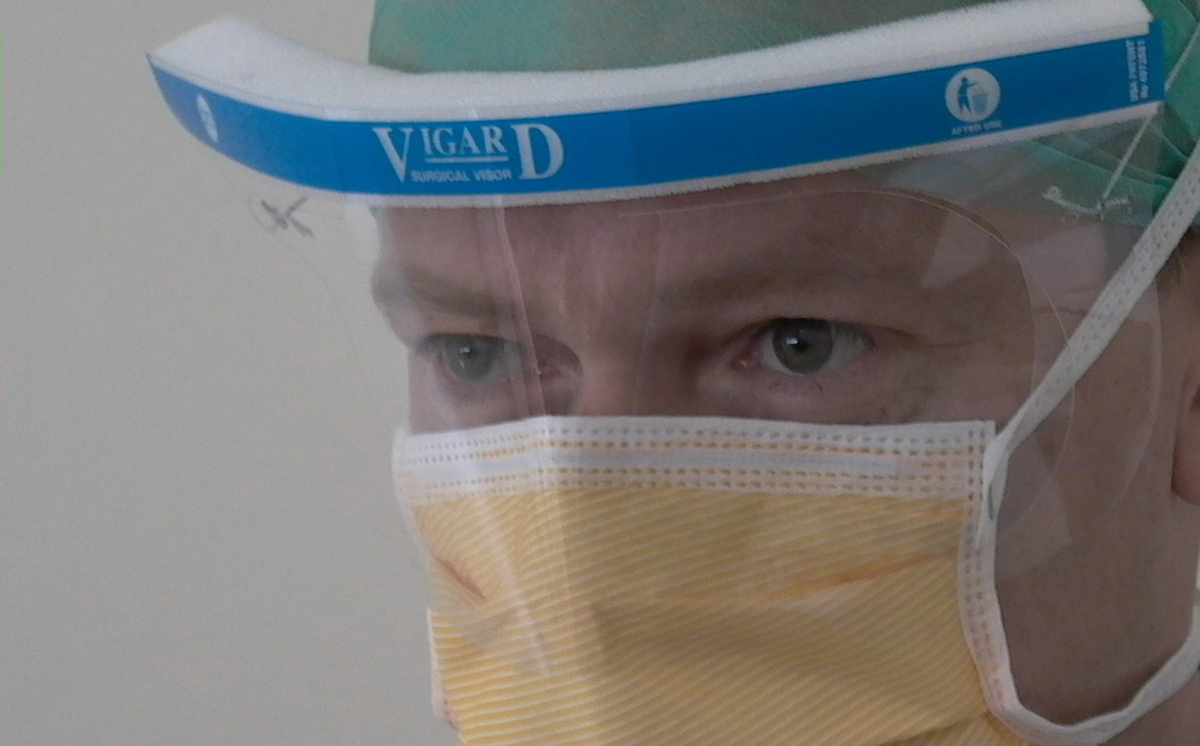This year just in the United States about 500,000 people will be diagnosed with atrial fibrillation, also known as A-fib. In atrial fibrillation, "bad connections" at the pulmonary veins, which bring oxygenated blood back from the lungs, cause "short circuits" in the conduction of the electrical impulses from the sinoatrial node that time the beating of the heart.

Instead of a steady impulse traveling across the atria to make them beat in rhythm, a series of disorganized impulses takes over. One "spark" in either or both of the upper chambers of the heart can cause more, so that the rhythm of the atria becomes more and more disorganized. The left atrium loses its ability to pump blood efficiently into the left ventricle for distribution to the rest of the body, and clots form. These clots may escape and eventually cause stroke.
A-fib may be paroxysmal, occurring for just a few minutes or a few hours until the atria restore their normal rhythms, or it may be permanent, occurring all the time. Often atrial fibrillation causes no symptoms at all, but in about 10% of cases, there may be:
- General weakness, dizziness, or fatigue.
- Fainting, or feeling as if one is about to faint.
- Palpitations, a sense of fluttering in the chest.
- A "blue at the gills" appearance, cyanosis (bluish skin due to lack of oxygen) in the neck and face.
- Enlarged eyes, bulging neck veins, or sudden accumulation of "water weight" in the mid-section.
- Swollen feet and ankles.
Usually, the pulse is rapid, in the 110-140 beats per minute range. The lower the blood pressure, the greater the clinical significance placed on rapid pulse.
Sometimes atrial fibrillation is so severe it is necessary to shock the heart back into normal rhythm. The procedure is not "horrific" but neither is it painless.
In milder cases, doctors put A-fib patients on various blood thinners to prevent the coagulation of the blood that leads to the clots that block arteries and cause stroke. Using blood thinners, however, is generally problematic.
Coumadin (warfarin), for example, has to be taken in a precise dosage. Too much causes bleeding even without cuts or scrapes. There's a real risk of hemorrhagic stroke, when a blood vessel "leaks" rather than clots, with an overdose of this medication.
Too little Coumadin doesn't stop clotting. And it's necessary to be careful with diet when taking Coumadin. This medication works by interfering with the ability of the blood to use vitamin K in making clotting factors. Leafy greens contain vitamin K, and eating a healthy salad can make this medication less effective.
See Also: Ten Essential Facts About Stroke
The newer medications dabigatran (Pradaxa), rivaroxaban (Xarelto), apixaban (Eliquis), and edoxaban (Lixiana) don't require dietary restrictions and are less likely to "work too well" and cause hemorrhagic strokes. But they are expensive, and as one user puts it, the bleeding from a paper cut can look like a crime scene.
Walking can become painful. Participation in sports or working around the house is out of the question, because of the bleeding risk. Easy bleeding and bruising becomes very upsetting to family members, especially grandchildren. But a new technology offer a different approach.
The Clot Catcher
Dr. Christian Machado, medical director of the Electrophysiology Services and Arrhythmia Device Clinic at St. John's Providence Hospital in Southfield, Michigan has become the first surgeon in the United States to provide a different way to stop clots from traveling from the heart to the brain and other locations in the body. He implants a device called the AMPLATZER™ Cardiac Plug (ACP) into a region of the atrium known as the left atrial appendage (LAA), which accumulates clots. This umbrella-like "clot catcher seals the LAA and prevents clots from traveling to the rest of the body.

Dr. Machado's patient Paul Burris, who recounted his experiences to the news service Ivanhoe (linked below), says the cardiac plug changed his life.
Burriss lives with atrial fibrillation. He took blood thinners, but the dosage high enough to lower his clotting factors had painful side effects. Even walking became painful, and playing with the grandkids was out of the question. Not only did he not feel like participating in their activities, the grandchildren protested at the opportunity to play with their grandfather with the comment "You know he bruises real easy," Burriss told Ivanhoe.
After installation of the cardiac plug, Burriss and his doctors were able to manage his clotting factors with lower doses of anticoagulants, and Burriss was able to play with his grandchildren again. And for a grandparent or a grandchild, that's a life changing benefit.
Machado reports that all of the procedures for implanting the cardiac plug have produced the desired results and none of the people who have received the AMPLATZER device has suffered complications. The device is delivered to the heart by a catheter. Open heart surgery is not necessary. The incision the doctor needs to enter the artery and go to the heart is just 3 mm wide and does not even need stitching.
See Also: Five Ways To Lower Risk Of Stroke
Both the AMPLATZER cardiac plug and a device by another manufacturer called the Watchman, made by Atritech, are available in some hospitals outside the United States. Earlier procedures with these devices were not entirely free of complications, although there were at first some reports of blood clots forming during the procedure and on the device itself. Dr. Machado has been able to avoid these complications. Most patients who receive the device take low-dose Aspirin and low-dose Plavix (clopidrogel) for three months as it becomes integrated into heart tissue and then just a baby Aspirin a day thereafter. Complications from blood thinners become a thing of the past and anticoagulant therapy (other than with Aspirin) may become unnecessary.
As this article is being written, the AMPLATZER device is only available in the United States to participants in a clinical trial. For more information about getting into the trial, visit http://clinicaltrials.gov and search for "Amplatzer cardiac plug clinical trial."
- Catching Clots: Saving the Lives of A-Fib Patients, Ivanhoe News Service. http://search.ivanhoe.com/channels/p_channelstory.cfm?storyid=32806&channelid=CHAN-100010. Accessed 8 February 2014.
- Photo by shutterstock.com
- Photo courtesy of adamci by FreeImages : www.freeimages.com/photo/71005


Your thoughts on this